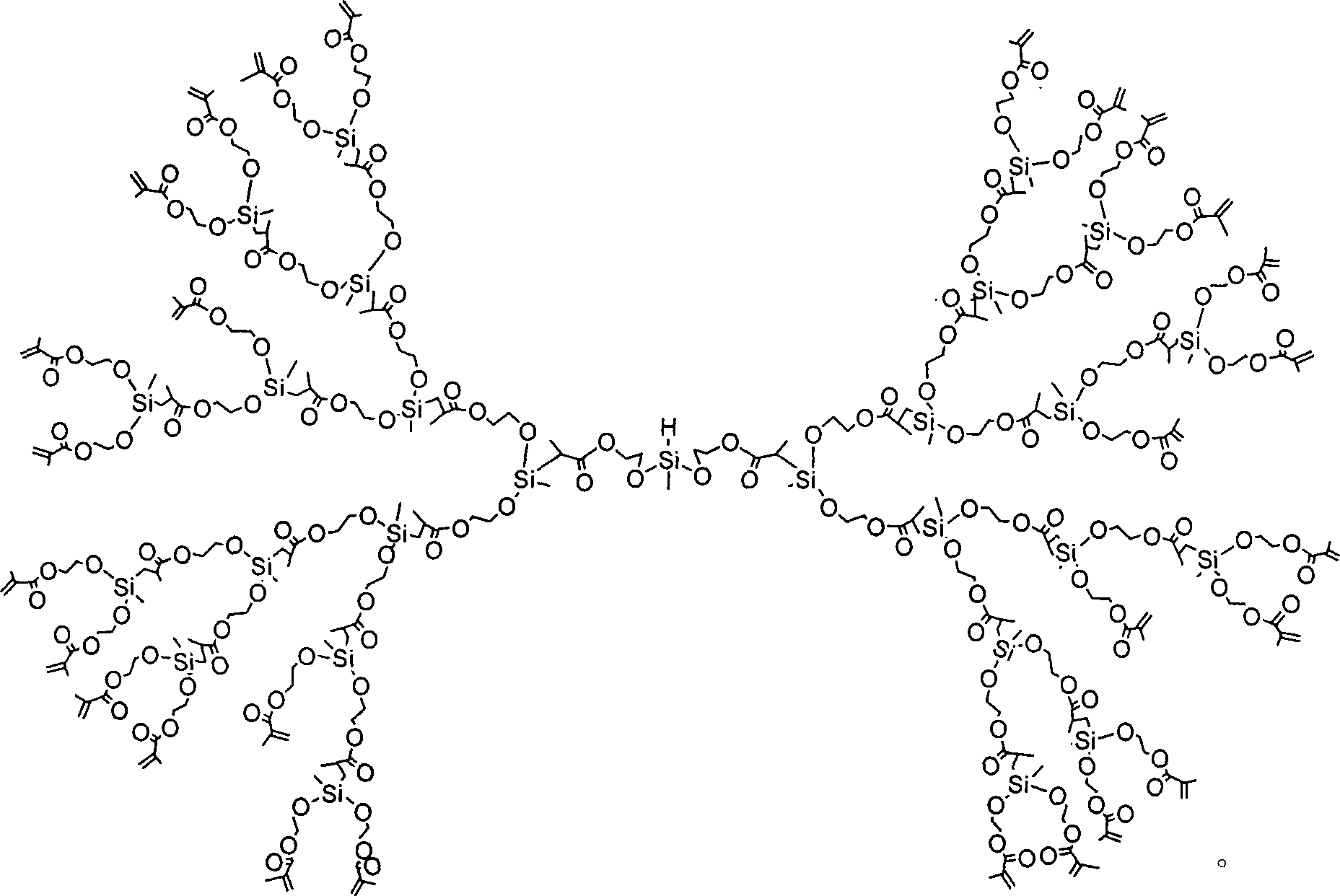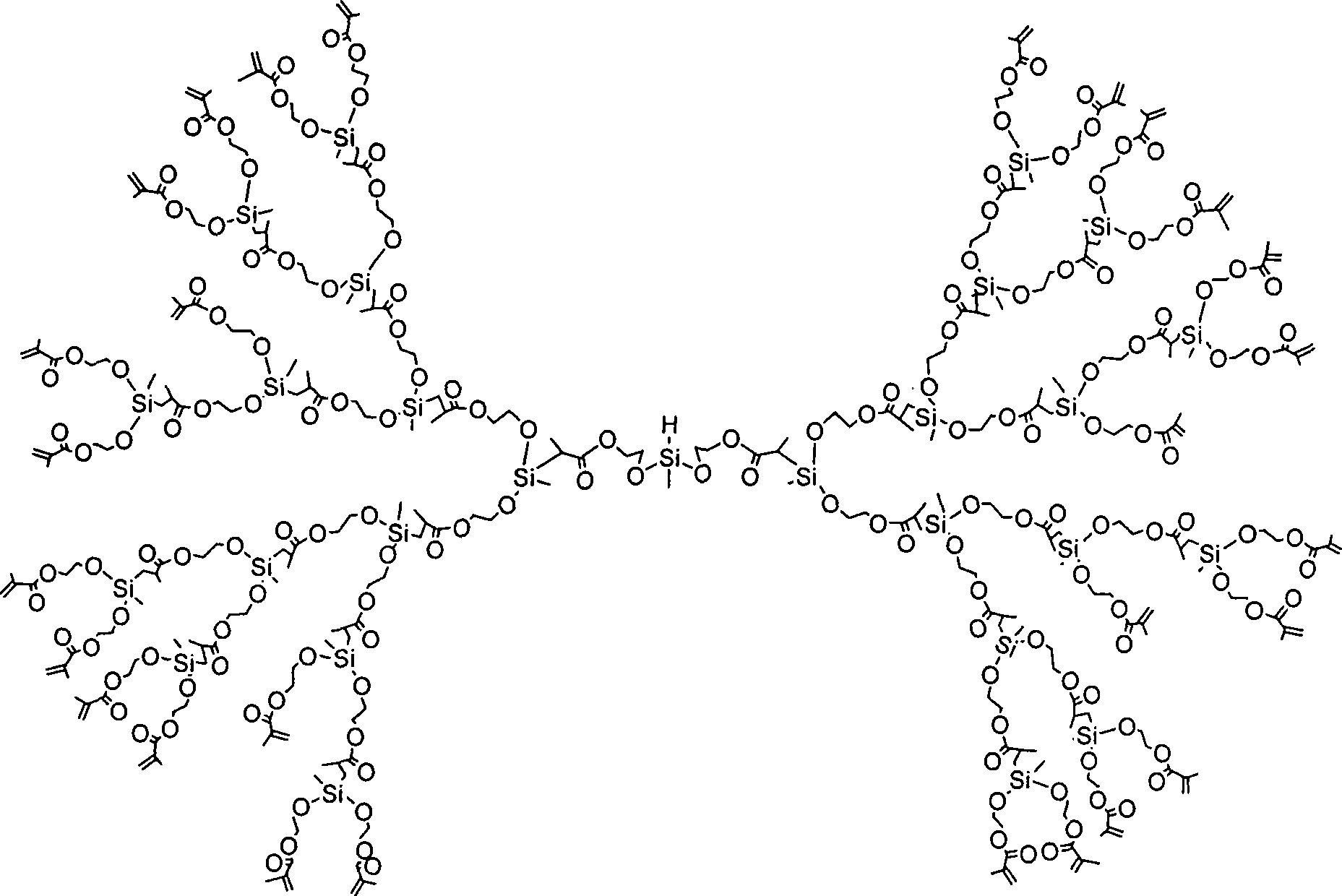Superbranched poly-siloxane base photoresist
A polysiloxane-based and polysiloxane technology, applied in the field of photoresist, can solve the problems that the cured product cannot be converted into a functional device, and the viscosity of the photo-cured resin is high, so as to achieve excellent heat resistance and good heat resistance , the effect of high reactivity
- Summary
- Abstract
- Description
- Claims
- Application Information
AI Technical Summary
Problems solved by technology
Method used
Image
Examples
Embodiment 1
[0014] 2g hyperbranched polysiloxane, 0.5g monofunctional monomer and 75mg photoinitiator Darocur 1173 were magnetically stirred at room temperature for 10min in the dark to obtain a photoresist.
Embodiment 2
[0016] 2g of hyperbranched polysiloxane, 1g of difunctional monomer and 100mg of photoinitiator IHT-PI 185 were magnetically stirred at room temperature for 10min in the dark to obtain a photoresist.
Embodiment 3
[0018] 2g of hyperbranched polysiloxane, 1g of monofunctional monomer, 50mg of photoinitiator IHT-PI 185 and 40mg of photoinitiator Darocur 1173 were magnetically stirred at room temperature for 10 minutes in the dark to obtain a photoresist.
PUM
| Property | Measurement | Unit |
|---|---|---|
| Weight average molecular weight | aaaaa | aaaaa |
Abstract
Description
Claims
Application Information
 Login to View More
Login to View More - R&D
- Intellectual Property
- Life Sciences
- Materials
- Tech Scout
- Unparalleled Data Quality
- Higher Quality Content
- 60% Fewer Hallucinations
Browse by: Latest US Patents, China's latest patents, Technical Efficacy Thesaurus, Application Domain, Technology Topic, Popular Technical Reports.
© 2025 PatSnap. All rights reserved.Legal|Privacy policy|Modern Slavery Act Transparency Statement|Sitemap|About US| Contact US: help@patsnap.com


